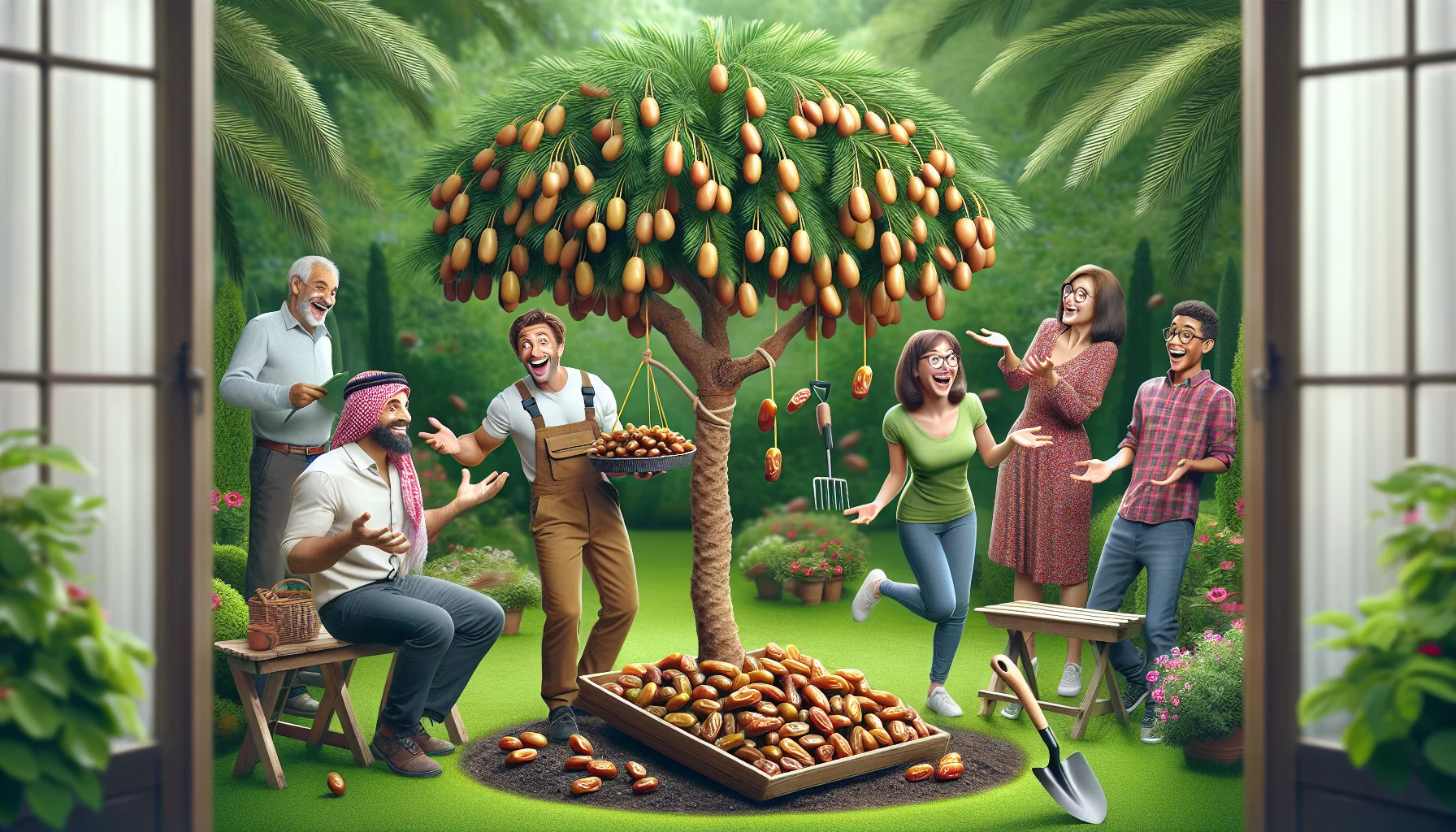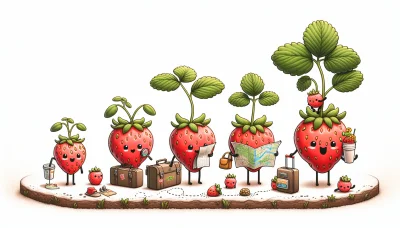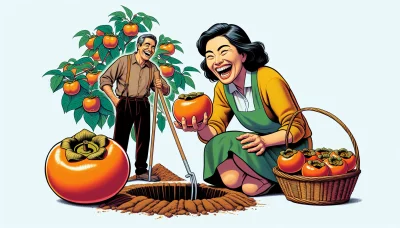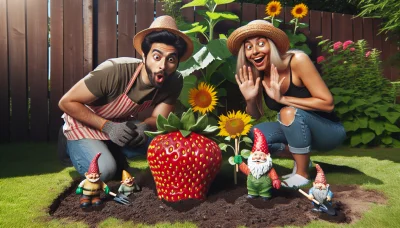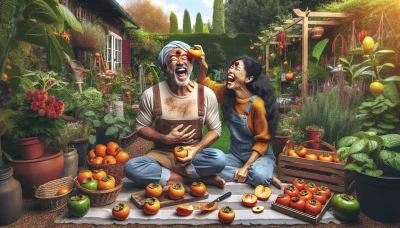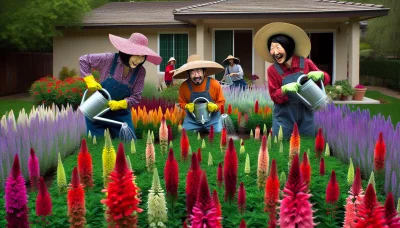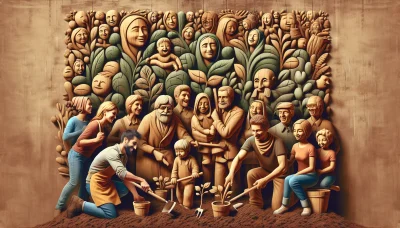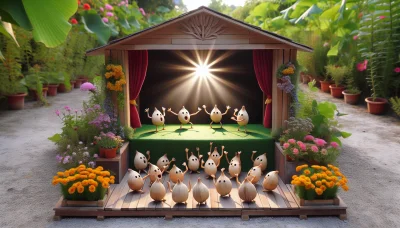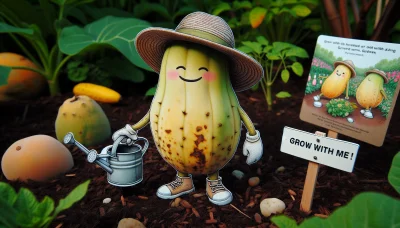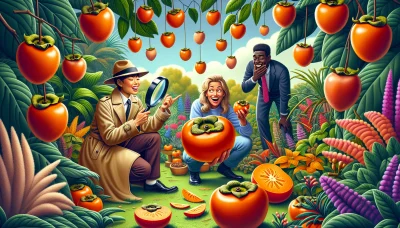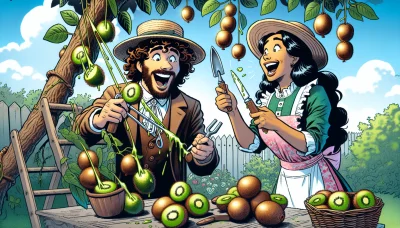Medjool date tree Quiz
Test Your Knowledge
Question of
Introduction to Medjool Date Trees
Medjool date trees, scientifically known as Phoenix dactylifera, are a species of palm tree known for producing the large, sweet fruits known as Medjool dates. These trees are native to the Middle East and North Africa, with a rich history dating back thousands of years. They thrive in hot, arid climates and are now cultivated in similar environments around the world. Medjool dates are highly prized for their size, sweetness, and chewy texture, making them a favorite for both fresh and dried consumption.
The Ideal Growing Conditions for Medjool Date Trees
Medjool date trees thrive in hot, arid climates that mimic their native desert environments. These trees require long, hot summers with temperatures often above 90°F (32°C) to properly ripen their fruit. Winters should be mild, but the trees can withstand temperatures as low as 20°F (-6°C) for short periods. When it comes to soil, Medjool date trees are not overly fussy, but they do best in well-draining, sandy loam soils with a pH between 6 and 8. They are quite tolerant of salty conditions and can even thrive in soils that are not suitable for other crops. Water requirements for Medjool date trees are high, especially in the heat of the summer. They need a deep, but infrequent watering schedule to encourage the roots to grow deeply, which helps them access water from deeper soil layers. Over-watering or poor drainage can lead to root rot, so it’s important to ensure that the soil allows for good water percolation.
Planting Your Medjool Date Tree
- Select a sunny location with well-draining soil.
- Ensure the spot is spacious enough as Medjool date trees can grow quite large.
- Test the soil pH; it should be between 6 and 7 for optimal growth.
- Prepare the planting hole, making it twice as wide and as deep as the root ball of your tree.
- Mix some compost or aged manure into the excavated soil to improve fertility.
- Remove the tree from its container gently to avoid damaging the roots.
- Place the tree in the center of the hole, ensuring it's standing straight.
- Backfill the hole with the amended soil, tamping down lightly to remove air pockets.
- Water the tree deeply to settle the soil around the roots.
- Mulch around the base of the tree to retain moisture and suppress weeds, keeping the mulch a few inches away from the trunk.
- Water the tree regularly, especially during the first growing season to establish a deep root system.
Caring for Your Medjool Date Tree
To ensure your Medjool date tree thrives, it's important to follow a few key care tips. First, watering should be done deeply but infrequently, allowing the soil to dry out somewhat between waterings. This mimics their natural desert conditions. For fertilizing, use a balanced palm fertilizer during the growing season to encourage healthy growth. Pruning is essential too; remove any dead or damaged fronds annually to keep your tree looking its best and to prevent any potential disease spread. With proper care, your Medjool date tree will be a lush, fruitful addition to your garden.
Common Pests and Diseases Affecting Medjool Date Trees
- Red Palm Weevil: A large beetle that lays its eggs in the trunks of date palms. The larvae then eat the inside of the tree, often killing it.
- Dubas Bug: A type of insect that feeds on the sap of the date palm, causing yellowing and reduced vitality of the tree.
- Bayoud Disease: A fungal disease that causes the death of the fronds and eventually the entire tree. It is recognized by the wilting and death of the fronds from the tip downward.
- Black Scorch Disease: Caused by a fungus, this disease results in black lesions on the leaves and can lead to significant leaf loss and reduced fruit production.
- Date Palm Leaf Spot: A disease caused by fungi, leading to spots on the leaves which can merge and cause significant damage to the foliage.
- Root Rot: A condition caused by various fungi that attack the roots of the date palm, leading to reduced water and nutrient uptake and eventually the death of the tree.
Harvesting Medjool Dates
Harvesting Medjool dates requires keen observation and timing to ensure the fruits are picked at their peak ripeness. Signs of ripeness include a deep brown color and a slightly wrinkled texture, indicating that the dates are sweet and ready to eat. The correct method to harvest dates from the tree involves gently twisting the fruit until it detaches, or using a pair of clean, sharp scissors to cut the stem close to the date. It's important to handle the dates carefully to avoid bruising the delicate fruit. Harvesting typically occurs from late summer through fall, depending on the local climate and conditions.
FAQs on Growing Medjool Date Trees
| Question | Answer |
|---|---|
| What climate is best for growing Medjool date trees? | Medjool date trees thrive in hot, dry climates with long, sunny summers and mild winters. They are not tolerant of cold and require minimal rainfall. |
| How much water do Medjool date trees need? | While they are drought-tolerant, regular deep watering is crucial during the growing season to support their development, especially in hot, dry climates. |
| Are Medjool date trees self-pollinating? | No, they are dioecious, meaning you need both male and female trees for fruit production. However, one male tree can pollinate up to 50 female trees. |
| How long does it take for a Medjool date tree to produce fruit? | Medjool date trees can take 4 to 8 years to begin producing fruit when grown from seed, but grafted plants can bear fruit in 2 to 3 years. |
| What kind of soil is best for Medjool date trees? | They prefer well-draining, sandy loam soils with a neutral to slightly alkaline pH. Poor drainage can lead to root rot and other issues. |
| How to fertilize Medjool date trees? | Use a balanced, slow-release fertilizer with equal parts nitrogen, phosphorus, and potassium in the early spring and late summer. |
| When is the best time to harvest Medjool dates? | The best time to harvest Medjool dates is when they turn a deep brown color and are slightly soft to the touch, typically in late summer or early fall. |
